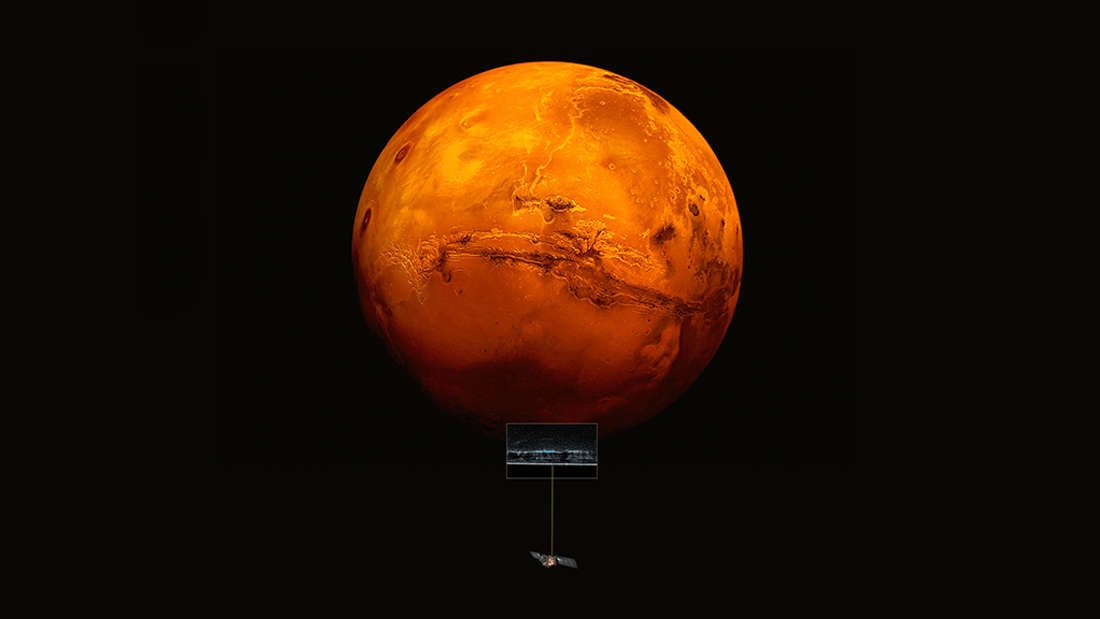
Scientists have uncovered ‘a stable body of liquid water’ on Mars, in what some are calling a “game changer” in the search for alien life.
Reported in the journal Science, researchers led by Dr Roberto Orosei from the National Institute of Astrophysics (INAF) in Rome say they have found a vast reservoir of water beneath the south pole of Mars. So vast, in fact, that it looks similar to a subglacial lake on Earth – one where life could arise.
“This is potentially the first habitat we know of on Mars,” Dr Orosei told IFLScience. “It’s the first place where microorganisms like those that exist today on Earth could survive.”

The large reservoir of water was found by a radar instrument, the Mars Advanced Radar for Subsurface and Ionosphere Sounding (MARSIS) instrument, on board ESA’s Mars Express spacecraft. The team used data collected by the spacecraft from May 2012 to December 2015.

The data showed that 0.9 miles below the surface, in a region called Planum Australe, there was a source of liquid water spanning about 12 miles across. The team do not know how deep this reservoir of water is, but note it is at least deeper than a few tens of centimeters, and possibly more.
“It’s very difficult to say what we’re really looking at,” Dr Anja Diez from the Norwegian Polar Institute in Tromsø, Norway, who wrote an accompanying perspective on the research, told IFLScience. “It could either be a thin layer of water, a large layer, or water in sediments.”
The team said they considered some other possibilities for the signal, including a layer of carbon dioxide ice or very low-temperature water ice. They suggest these are unlikely, however, because they would not have caused as a strong a reflection as seen in the data.

There are still unanswered questions about this liquid water discovery. It’s not clear if it’s a large body, or simply water seeping in between rocks. What it does suggest, though, is that liquid water exists beneath the surface of Mars. And on Earth, liquid water almost always means life.
For way more information, check out the full article by Jonathan O’Callaghan at IFL Science.



